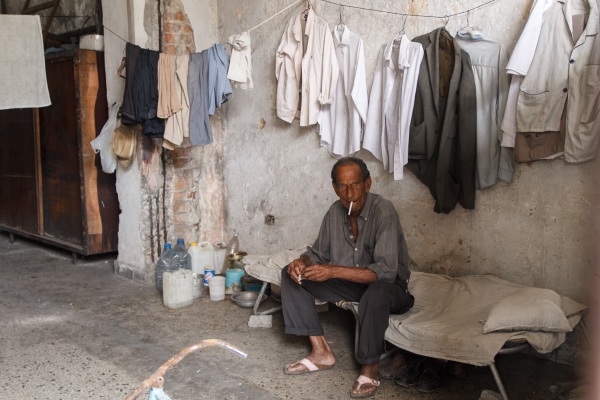Havana’s Fading Colors
Photo feature by Juan Suarez
HAVANA TIMES — Every Cuban dreams of leading a more comfortable life, but obtaining or repairing an apartment or house is extremely difficult. Only after many years or decades of work can such longings be fulfilled. Walking around the streets of my Centro Habana and Cerro, I have captured homes of different styles and colors, sorry-looking buildings, sad facades and rubble accumulated at street corners. Less and less of a once colorful city remains. I wonder what this city will look like in 20 years? Yes there are other “nicer” parts of the capital which I will capture at a later date.
Click on the thumbnails below to view all the photos in this gallery. On your PC or laptop, you can use the directional arrows on the keyboard to move within the gallery. On cell phones use the keys on the screen.































Very interesting comment although I think you are giving Fidel way too much prescient credit. The deterioration of the middle class mansions has indeed taken place but I just don’t believe Fidel did it on purpose. I think his policies are a failure and the deterioration of the housing stock is yet another result of that failure. It may have also served the ideological purpose you point out, but I just don’t believe the guy is that smart. If he were he would have figured out a way to have kept Cuba out of the toilet it is in today.
There was an ideological reason why Castro left most of the colonial mansions in Havana in neglect. As explained by Theodore Dalrymple (http://www.city-journal.org/html/12_3_urbanities-why_havana.html), “Havana was a large city of astonishing grandeur and wealth, which was clearly not confined to a tiny minority, despite the coexistence with that wealth of deep poverty. Hundreds of thousands of people obviously had lived well in Havana, and it is not plausible that so many had done so merely by the exploitation of a relatively small rural population. They must themselves have been energetic, productive, and creative people. Their society must have been considerably more complex and sophisticated than Castro can admit without destroying the rationale of his own rule. In the circumstances, therefore, it became ideologically essential that the material traces and even the very memory of that society should be destroyed.”
By leaving most of the mansions neglected and left to crumble, Castro was determined to erase any physical trace of the middle class mansions in Havana.
The Castros goals give back the city in ruins. Not even Haiti look like this and this is Centro Habana, I can’t even think what Lúyano look like.
When the Castro sycophants who comment here at HT speak of the lessons that the US can learn from Cuba, surely they don’t mean to include how to maintain the public infrastructure. Early on in my initial visits to Cuba, I reflected to a neighbor of the casa particular where I lived how surprised I was to see buildings in such visible disrepair still standing. He calmly replied that if I believed that the condition of the infrastructure that I can see looks bad, imagine what the infrastructure that I didn’t see looked like. The water and sewer pipes buried in the ground and the parts of buildings covered by crumbling mortar and peeling paint. It is no wonder that Habaneros walk in the middle of the street and not on the sidewalk after the rain stops and the sun comes out in order to avoid the frequent collapse of balconies.
Congratulations Juan Suarez! You have fully captured the reality of the living conditions of the average Cuban. Five years ago I was asked by a Canadian who had never visited Cuba how I would describe the country. i responded that it could be described in one word: “crumbling”. The peoples homes are crumbling, the schools are crumbling, the roads including the much vaunted autopista are crumbling, the hospitals are crumbling, public buildings are crumbling.
Are there exceptions? Yes, the UNESCO sites paid for with foreign money – Old Havana, Vinales, Trinidad etc. Other exceptions include the Dr. Ernesto Guevara mausoleum at Santa Clara and now the Capitolia which is being restored for the regime to use for its gatherings of the communist faithful.
Those Socialismo adherents and admirers will I hope study your photographs and reflect that the deterioration of property is the consequence of fifty five years of the Castro family regime dictatorship and then – if their clouded minds allow – reflect upon what another twenty years of Socialismo will achieve.
The answer being offered by the Castro family regime is that Gaviota SA will construct an additional 14,000 bedrooms in the period 2015-2017. Not for the people you show in your photographs, but luxury hotel bedrooms for the additional tourists they anticipate.
Organizations and businesses which can anticipate investment include:
Gaviota SA (Hotels)
Aerogaviota (Airline)
TRD Caribe (Retail shops)
Union de la Industria Militar (Defense Industries)
Grupo de la Electronico (Electronics & IT hardware)
Habanos SA (Cigars)
Cuban Civil Aviation Corp. (Cubano and Aerocaribbean airlines)
These organizations are all under the control of GAESA the holding company for the Cuban Defense Ministry which controls 80% of Cuba’s economy.
Who is boss of this economic empire and also of RAFIN SA (Raul & Fidel)
General Luis Alberto Rodriguez Lopez-Callejas
Who is the General?
Why, son-in-law of President Raul Castro Ruz
Who is Head of the military and has been for fifty five years?
President Raul Castro Ruz
THIS IS THE CASTRO FAMILY REGIME
Who paid for all this?
THE PEOPLE OF CUBA!